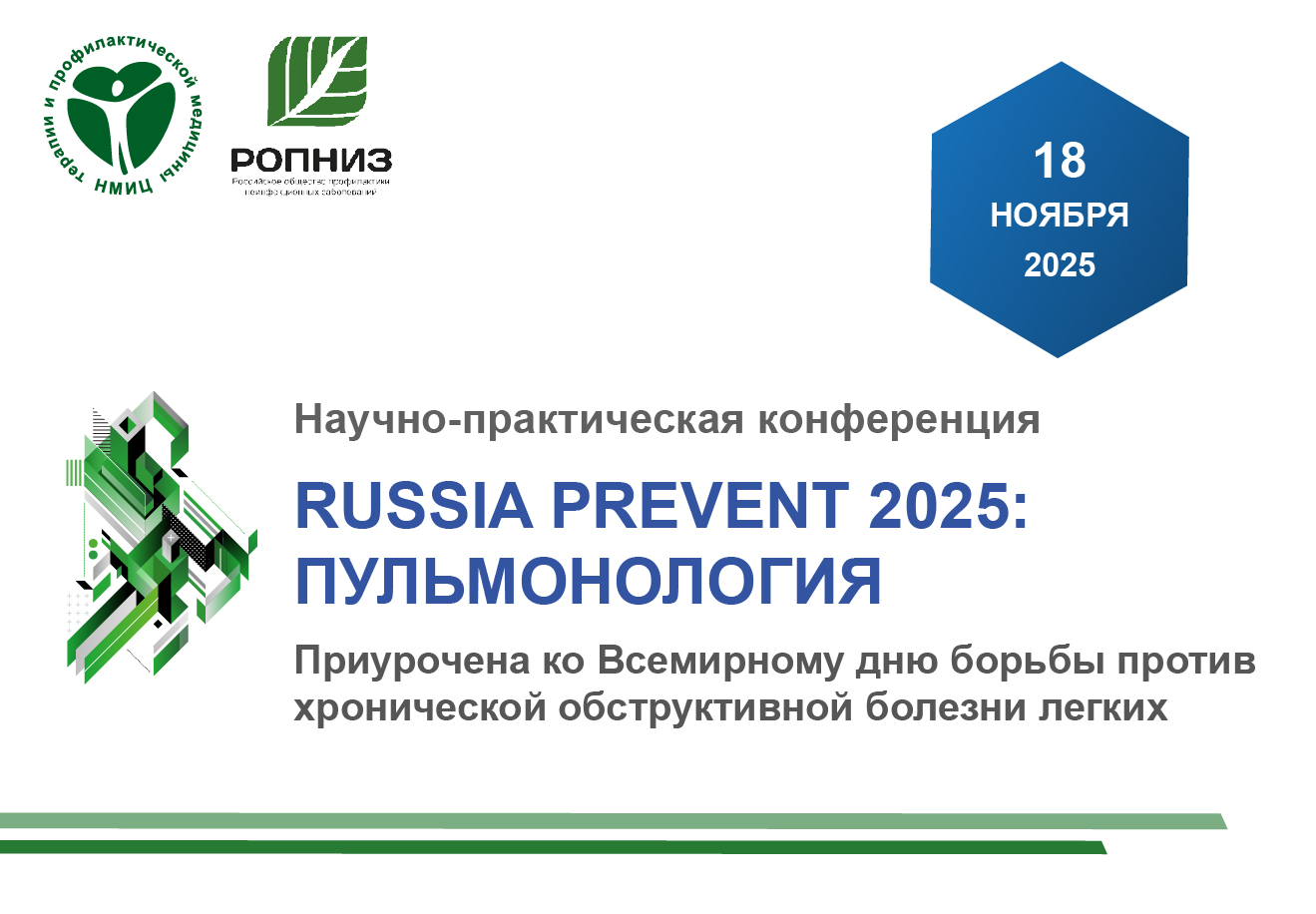Earlyonset atrial fibrillation in patients with cardiomyopathy: clinical and genetic structure and impact on prognosis
https://doi.org/10.15829/1728-8800-2025-4522
EDN: NZVYAU
Abstract
Aim. To study the genotype and phenotype cardiomyopathy profile with atrial fibrillation (AF), as well as to evaluate the clinical outcomes and prognostic significance of genotyping early manifestations of AF in patients with dilated cardiomyopathy (DCM) and non-dilated left ventricular cardiomyopathy (NDLVC).
Material and methods. The study included 220 genotyped patients with cardiomyopathy as follows: 186 patients with DCM — 127 (68,3%) men, aged 44 [34; 55] years, left ventricular ejection fraction (LVEF) 30 [25; 36]%; 34 patients with NDLVC — 23 (67,6%) men, aged 35 [32; 41] years, LVEF 53 [47; 60]%. The follow-up period was 7 years with Me of 85 [69; 202] months. The cohorts were compared for the incidence of early-onset AF (at age <45 years), the genetic profile of cardiomyopathy, and clinical outcomes.
Results. Early-onset AF (paroxysmal, persistent, or permanent) was registered in 48 patients aged 35,3±6,8 years, while late-onset AF — in 33 individuals aged 53,2±3,7 years. Pathogenic variants in the LMNA, TTN, and SCN5A genes, identified in 19 (54,3%) patients, accounted for more than half of all genotypes with early-onset AF. In the laminopathy cohort (n=19), the prevalence of early-onset AF phenotype was the highest and amounted to 52,6%. Among all patients with early-onset AF, the prevalence of LMNA mutations was 20,8%; loss-of-function TTN variants were detected in 12,5%. The probability of detecting a cardiomyopathy-related variant was highest (odds ratio (OR) 17,4; 95% confidence interval (CI): 4,49-69,1) in individuals with early AF diagnosed at the age of <34 years with a family history of cardiomyopathy, and lowest in those >50 years old (χ2=30,2; p<0,001). Multivariate Cox regression analysis revealed that early AF with the pathogenic cardiomyopathy genotype was an independent predictor of cardiovascular death (hazard ratio (HR) 2,11; 95% CI: 1,09-4,07; p=0,027).
Conclusion. Variants in the LMNA, TTN, and SCN5A genes predominate in patients with genetic cardiomyopathy and early AF. Significant associations were found between genotype-positive cardiomyopathy with early-onset AF and unfavorable outcomes.
About the Authors
T. G. VaykhanskayaBelarus
Rosa Luxemburg St., 110B, Minsk, 220036
T. T. Gevorkyan
Belarus
Rosa Luxemburg St., 110B, Minsk, 220036
O. D. Levdansky
Belarus
Akademicheskaya St., 27, Minsk
T. M. Koptyukh
Belarus
Rosa Luxemburg St., 110B, Minsk, 220036
References
1. Laws JL, Shabani M, Williams HL, et al. The Therapeutic Impact of Genetic Evaluation in an Atrial Fibrillation Precision Medicine Clinic. medRxiv [Preprint]. 2025:2025.03.28.25324544. doi:10.11 01/2025.03.28.25324544.
2. Yoneda ZT, Anderson KC, Quintana JA, et al. EarlyOnset Atrial Fibrillation and the Prevalence of Rare Variants in Cardiomyopathy and Arrhythmia Genes. JAMA Cardiol. 202;6(12):13719. doi:10.1001/jamacardio.2021.3370.
3. Yeung C, Enriquez A, SuarezFuster L, et al. Atrial fibrillation in patients with inherited cardiomyopathies. Europace. 2019;21:22 32. doi:10.1093/europace/euy064.
4. Yoneda ZT, Anderson KC, Fei Y, et al. Mortality in earlyonset atrial fibrillation and rare variants in cardiomyopathy and arrhythmia genes. JAMA Cardiol. 2022;7(7):73341. doi:10.1001/jamacardio. 2022.0810.
5. Charron P, Elliott PM, Gimeno JR, et al. The Cardiomyopathy Registry of the EURObservational Research Programme of the ESC. Eur Heart J. 2018;39:178493. doi:10.1093/eurheartj/ehx819.
6. Buckley BJR, Harrison SL, Gupta D, et al. Atrial Fibrillation in Patients With Cardiomyopathy: Prevalence and Clinical Outcomes From RealWorld Data. J Am Heart Assoc. 2021;10(23):e021970. doi:10.1161/jaha.121.021970.
7. Verdonschot JAJ, Hazebroek MR, Krapels IPC, et al. Implications of genetic testing in dilated cardiomyopathy. Circ Genom Precis Med. 2020;13:47687. doi:10.1161/CIRCGEN.120.003031.
8. Gigli M, Merlo M, Graw SL, et al. Genetic risk of arrhythmic phenotypes in patients with dilated cardiomyopathy. J Am Coll Cardiol. 2019;74:148090. doi:10.1016/j.jacc.2019.06.072.
9. Li Z, Chen P, Li C, et al. Genetic arrhythmias complicating patients with dilated cardiomyopathy. Heart Rhythm. 2020;17(2):30512. doi:10.1016/j.hrthm.2019.09.012.
10. Towbin JA. Genetic arrhythmias complicating patients with dilated cardiomyopathy: How it happens. Heart Rhythm. 2020;17(2):31314. doi:10.1016/j.hrthm.2019.10.019.
11. Barrett KMS, Cirulli ET, Bolze A, et al. Cardiomyopathy prevalence exceeds 30% in individuals with TTN variants and early atrial fibrillation. Genet Med. 2023;25(4):100012. doi:10.1016/j.gim. 2023.100012.
12. Arbelo E, Protonotarios A, Gimeno JR, et al. ESC Scientific Document Group. 2023 ESC Guidelines for the management of cardiomyopathies. Eur Heart J. 2023;44(37):3503626. doi:10.1093/eurheartj/ehad194.
13. Richards S, Aziz N, Bale S, et al. Standards and guidelines for the interpretation of sequence variants: a joint consensus recommendation of the American College of Medical Genetics and Genomics and the Association for Molecular Pathology. Genet Med. 2015;17:40524. doi:10.1038/gim.2015.30.
14. Van Gelder IC, Rienstra M, Bunting KV, et al. ESC Scientific Document Group, 2024 ESC Guidelines for the management of atrial fibrillation developed in collaboration with the European Association for CardioThoracic Surgery (EACTS): Developed by the task force for the management of atrial fibrillation of the European Society of Cardiology (ESC), with the special contribution of the European Heart Rhythm Association (EHRA) of the ESC. Endorsed by the European Stroke Organisation (ESO). Eur Heart J. 2024;45(36):3314414. doi:10.1093/eurheartj/ehae176.
15. Galyavich AS, Tereshchenko SN, Uskach TM, et al. 2024 Clinical practice guidelines for Chronic heart failure. Russian Journal of Cardiology. 2024;29(11):6162. (In Russ.) doi:10.15829/1560407120246162.
16. Loukianov MM, Martsevich SY, Mareev YV, et al. Patients with a Combination of Atrial Fibrillation and Chronic Heart Failure in Clinical Practice: Comorbidities, Drug Treatment and Outcomes. Rational Pharmacotherapy in Cardiology. 2021;17(6):81624. (In Russ.) doi:10.20996/1819644620211205.
17. Martsevich SY, Kutishenko NP, Lukina YV, et al. Observational studies and registers. Their quality and role in modern evidencebased medicine. Cardiovascular Therapy and Prevtntion. 2021;20(2):2786. (In Russ.) doi:10.15829/1728880020212786.
18. Polyakov DS, Fomin IV, Valikulova FY, et al. The EPOCHCHF epidemiological program: decompensated chronic heart failure in reallife clinical practice (EPOCHDCHF). Russ Hear Fail J. 2016;17(5):299305. (In Russ.) doi:10.18087/RHFJ.2016.5.2239.
19. Antonopoulos AS, Kasiakogias A, Kouroutzoglou A, et al. Atrial fibrillation burden and management in cardiomyopathies: Current evidence and unmet needs. Trends Cardiovasc Med. 2025;35(5): 28493. doi:10.1016/j.tcm.2025.01.007.
20. TremblayGravel M, Ichimura K, Picard K, et al. Intrinsic Atrial Myopathy Precedes Left Ventricular Dysfunction and Predicts Atrial Fibrillation in Lamin A/C Cardiomyopathy. Circ Genom Precis Med. 2023;16(1):e003480. doi:10.1161/CIRCGEN.121.003480.
21. Vaikhanskaya TG, Dubovik TA, Levdansky OD, et al. Atrial fibrillation in patients with dilated cardiomyopathy: prevalence, risk factors and prognostic significance. Russian Journal of Cardiology. 2023;28(11):5544. (In Russ.) doi:10.15829/1560407120235544.
22. Berdibekov BSh, Bulaeva NI, Alexandrova SA, et al. Sudden cardiac death risk stratification in dilated cardiomyopathy: a stateoftheart review. Russian Journal of Cardiology. 2025;30(6S):6114. (In Russ.) doi:10.15829/1560407120256114.
23. Kucher AN, Sleptcov AA, Nazarenko MS. Pathogenetics of Cardiomyopathy. Genetics. 2023;59(6):61532. (In Russ.) doi:10.31857/S0016675823050107.
Supplementary files
What is already known about the subject?
- Atrial fibrillation (AF) in cardiomyopathy is determined by multiple mechanisms associated with the genetic substrate, epigenomic, and population risk factors.
- The addition of AF to cardiomyopathy worsens the disease prognosis with an increased risk of death and hospitalization for stroke and heart failure.
What might this study add?
- A decrease in survival was demonstrated in patients with early AF, first recorded at age <45 years. Early development of AF in genotype-positive patients with cardiomyopathy (dilated cardiomyopathy/non-dilated cardiomyopathy) is associated with a 2-fold increased risk of cardiovascular death.
- Titin‐truncating variants (TTNtv), lamin A/C gene (LMNA) mutations, and pathogenic variants in the major sodium channel Na V1.5 gene (SCN5A) are associated with early-onset AF and cardiomyopathy.
- A cardiomyopathy genetic risk score has been developed for personalized risk stratification as an alternative tool for selecting patients with a high expected probability of a positive genotyping result.
Review
For citations:
Vaykhanskaya T.G., Gevorkyan T.T., Levdansky O.D., Koptyukh T.M. Earlyonset atrial fibrillation in patients with cardiomyopathy: clinical and genetic structure and impact on prognosis. Cardiovascular Therapy and Prevention. 2025;24(9):4522. (In Russ.) https://doi.org/10.15829/1728-8800-2025-4522. EDN: NZVYAU

























































